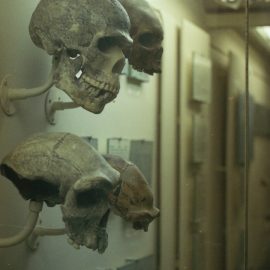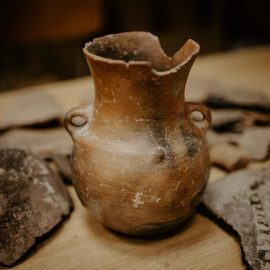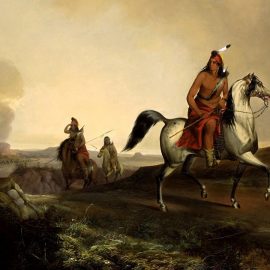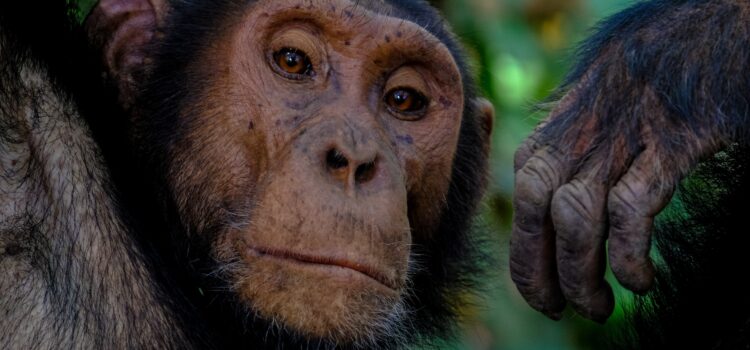
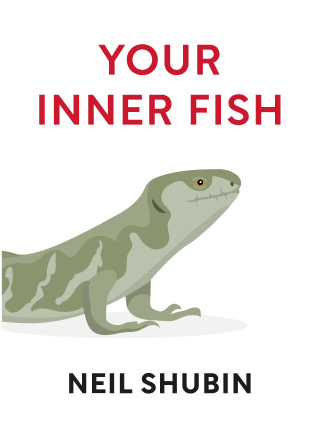
This article is an excerpt from the Shortform book guide to "Your Inner Fish" by Neil Shubin. Shortform has the world's best summaries and analyses of books you should be reading.
Like this article? Sign up for a free trial here .
What other animals are on the human family tree? How do DNA and our common ancestors show what species we’re connected to?
The human family tree is extensive. Despite the unique ways in which humans developed, we’re similar to other animals— including our close family members like chimpanzees, but also animals like sea sponges and sharks.
Read more about the human family tree and how we’re connected to all life on Earth.
The Human Family Tree
With our capabilities in DNA and fossil research, we can see more clearly than ever how our bodies fit into the story of how life developed on earth.
The preceding chapters show there are striking similarities between us and other creatures, both living and long gone. We have connections in our development with microbes, ancient worms, sponges, fish, sharks, tiny extinct rodents, and many more creatures.
Humans have parts that resemble parts of other creatures, we have certain parts in common with every other animal, and we have parts that are unique to us. This chapter shows how scientists can build a human family tree that shows the order in which these features develop.
Tracing the human tree through its many branches even explains some of the quirks in our development, such as hiccups and sleep apnea.
Signature Traits on The Human Family Tree
The most basic law of biology is that every living creature had parents (or in the case of cloning, genetic information from parents). We’re modified descendants of our parents. In other words, all organisms are modified versions of their parents’ DNA and this is clear in the human evolution family tree.
This pattern of “descent with modifications” means we can trace family lineage by blood samples or by a signature—a distinct biological feature in a family. Understanding descent with modifications, it’s theoretically possible to create a human family tree showing how closely related people are in any given group.
Here’s an example of how descent with modifications works in a family of clowns (assuming in the example that clown features are heritable):
- A first generation of clowns has a mutation giving them a red nose.
- The second generation has the red nose, plus a new mutation giving them big feet.
- The third generation has the red nose, big feet, and a mutation for orange curly hair.
- The first and third generations share a red nose, while the second and third generations share red noses and big feet.
Actual human traits can be traced the same way, although it’s more complicated because humans and animals typically change more than one trait with each generation. It’s even possible to trace a lineage of shared traits through humans, animals, and back to the earliest life forms.
Revisiting the Zoo
A trip to the zoo helps show how scientists trace relationships among humans and other creatures.
While it can’t zero in on one specific ancestor, a human family tree looks something like this (incorporating modifications made with each generation):
- Multicellular animals: animals with bodies composed of many cells; this group encompasses all animals.
- Bilateria: multicellular animals with a body plan like ours, plus a front/back, top/bottom, and left/right symmetry; this includes every animal from insects to humans.
- Vertebrates: animals with a body plan like ours, plus a skull and backbone.
- Vertebrate tetrapods: animals with a body plan like ours, a skull and backbone, plus four limbs.
- Mammals: animals with a body plan like ours, a skull, backbone, and four limbs, plus a three-boned middle ear.
- Humans: animals with a body plan like ours, a skull, backbone, four limbs, and a three-boned middle ear—who walk on two legs and have a large brain.
Fossil data also show the order: the first multicellular fossil at 600 million years old is older than the first fossil with a three-boned middle ear (200 million years old). The three-boned middle ear fossil is in turn older than the first fossil that walked on two legs (4 million years old).
The human body is something like a time capsule, containing features from ancient animals that mark key moments in the history of life, visible on the human evolution family tree.
History Comes Back to Bite Us on The Human Family Tree
Sometimes the human family tree makes us sick. Many ills and ailments we suffer can be traced to the way humans adapted and modified features or body systems of our animal ancestors that were designed for other purposes.
It’s like trying to jury-rig an old Volkswagen Beetle to go 110 mph—whatever modifications you make will have limitations because it was originally designed for gas mileage, not speed. Similarly, when you start with the body of a fish and turn it into a human mammal that walks on two legs, you get knee problems because limbs in fish were not originally developed to support walking upright on two legs.
Another example is the convoluted paths of our arteries, veins, and nerves, which create problems that come back to bite us. Our blood flow problems are further exacerbated by living a sedentary lifestyle in a body designed for a short, active life.
This disconnect with our ancient history means we malfunction in foreseeable ways.
Our Hunter-Gatherer History
We can trace most ailments of modern life to the fact that our bodies were built to be active predators on the hunt for food, or gatherers and agriculturalists—yet today, most of us spend our days sitting.
Four of today’s top 10 causes of death—heart diseases, diabetes, obesity, and stroke—stem from a sedentary lifestyle.
Our Primate History
Humans also make a tradeoff for our ability to talk: the problems of choking and sleep apnea.
Throat muscles that allow us to talk are a modification of the gill arches in fish. The muscles of the back of the throat contract and relax when we speak, so we can make a range of sounds.
However, this flexibility means that the throat can collapse while we sleep to the point that air can’t pass through—a breathing problem called sleep apnea.
Our Tadpole History
Our hiccup reflex can be traced to fish and tadpoles. This annoying reflex is triggered by the nerves that control our breathing. We can see why on the human family tree.
1) The nerve spasm in hiccups stems from our fish history.
Our brain coordinates our breathing muscles: the brain stem activates nerves, which activate muscles in the chest, diaphragm, and throat in an orderly sequence.
Fish have the same nerve pattern, but their nerves and muscles for breathing are close to the brain stem. In contrast, our breathing muscles are farther from our brain stem and our nerves travel a convoluted path, leaving them vulnerable to interruptions that could cause a spasm.
2) The flap closure of hiccups is a result of our amphibian history.
Tadpoles use the same pattern of sudden muscle contraction and flap closure that causes hiccups in humans for a beneficial purpose. It’s designed to allow them to keep water out of their lungs and breathe through their gills. However, it’s a pattern that doesn’t serve any useful purpose in humans.
Our Shark History
One of the more exciting species on the human family tree is the shark. The human problem of developing a hernia near the groin comes from transforming a shark’s body into a mammal. The shark is one of the most important parts of the human evolution family tree.
In sharks, the testes holding sperm are positioned toward the front of the body in the chest. In human males, the testes are much lower, in the scrotum, to keep the sperm at optimum temperature.
The repositioning of gonads from high in the chest to low in the groin area means the sperm cord carrying sperm from the gonads to the penis travels a complex path up and over the pelvis, then back down and out through the penis.
Our Microbial History
Our cells contain mitochondria, which have many important functions, including turning oxygen and sugar into energy for the cell, metabolizing toxins, and other regulatory tasks. Their functioning can be traced to microbes that existed billions of years ago.
Many things can go wrong inside mitochondria, leading to illness or death. For example, a problem with a chemical reaction that consumes oxygen may affect specific tissues such as the eyes or may affect every body system.
Mitochondria’s bacterial past is reflected in their genetic and cellular structure. The chemical reactions they use originated in microbes. In fact, bacteria today use similar processes, which scientists study to learn about human mitochondrial diseases.
It’s just one of many ways that understanding our evolution leads to insights and advances in human genetics and medicine. Besides microbes, myriad other organisms including flies, worms, and fish can teach us how our bodies work, how they fail, and what we can do to live longer, healthier lives.

———End of Preview———
Like what you just read? Read the rest of the world's best book summary and analysis of Neil Shubin's "Your Inner Fish" at Shortform .
Here's what you'll find in our full Your Inner Fish summary :
- How your hands and feet are like a fish that lived hundreds of millions of years ago
- How the structure of your head can be traced back to an ancient, headless worms
- What parts of your body are uniquely human

